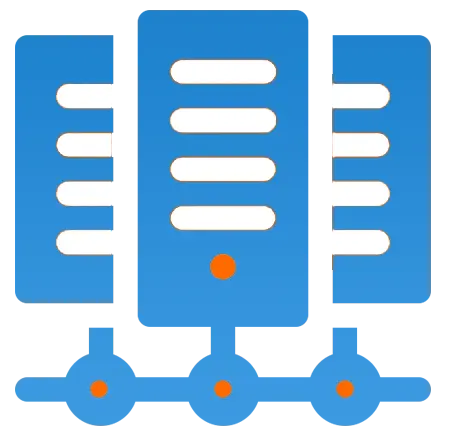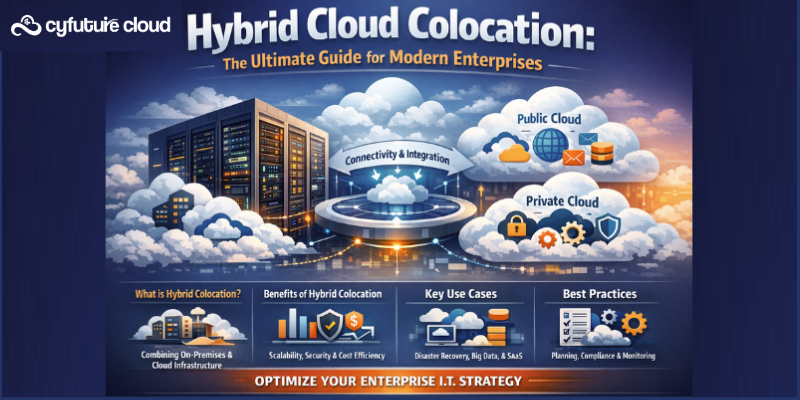Get 69% Off on Cloud Hosting : Claim Your Offer Now!
- Products
-
Compute
Compute
- Predefined TemplatesChoose from a library of predefined templates to deploy virtual machines!
- Custom TemplatesUse Cyfuture Cloud custom templates to create new VMs in a cloud computing environment
- Spot Machines/ Machines on Flex ModelAffordable compute instances suitable for batch jobs and fault-tolerant workloads.
- Shielded ComputingProtect enterprise workloads from threats like remote attacks, privilege escalation, and malicious insiders with Shielded Computing
- GPU CloudGet access to graphics processing units (GPUs) through a Cyfuture cloud infrastructure
- vAppsHost applications and services, or create a test or development environment with Cyfuture Cloud vApps, powered by VMware
- Serverless ComputingNo need to worry about provisioning or managing servers, switch to Serverless Computing with Cyfuture Cloud
- HPCHigh-Performance Computing
- BaremetalBare metal refers to a type of cloud computing service that provides access to dedicated physical servers, rather than virtualized servers.
-
Storage
Storage
- Standard StorageGet access to low-latency access to data and a high level of reliability with Cyfuture Cloud standard storage service
- Nearline StorageStore data at a lower cost without compromising on the level of availability with Nearline
- Coldline StorageStore infrequently used data at low cost with Cyfuture Cloud coldline storage
- Archival StorageStore data in a long-term, durable manner with Cyfuture Cloud archival storage service
-
Database
Database
- MS SQLStore and manage a wide range of applications with Cyfuture Cloud MS SQL
- MariaDBStore and manage data with the cloud with enhanced speed and reliability
- MongoDBNow, store and manage large amounts of data in the cloud with Cyfuture Cloud MongoDB
- Redis CacheStore and retrieve large amounts of data quickly with Cyfuture Cloud Redis Cache
-
Automation
Automation
-
Containers
Containers
- KubernetesNow deploy and manage your applications more efficiently and effectively with the Cyfuture Cloud Kubernetes service
- MicroservicesDesign a cloud application that is multilingual, easily scalable, easy to maintain and deploy, highly available, and minimizes failures using Cyfuture Cloud microservices
-
Operations
Operations
- Real-time Monitoring & Logging ServicesMonitor & track the performance of your applications with real-time monitoring & logging services offered by Cyfuture Cloud
- Infra-maintenance & OptimizationEnsure that your organization is functioning properly with Cyfuture Cloud
- Application Performance ServiceOptimize the performance of your applications over cloud with us
- Database Performance ServiceOptimize the performance of databases over the cloud with us
- Security Managed ServiceProtect your systems and data from security threats with us!
- Back-up As a ServiceStore and manage backups of data in the cloud with Cyfuture Cloud Backup as a Service
- Data Back-up & RestoreStore and manage backups of your data in the cloud with us
- Remote Back-upStore and manage backups in the cloud with remote backup service with Cyfuture Cloud
- Disaster RecoveryStore copies of your data and applications in the cloud and use them to recover in the event of a disaster with the disaster recovery service offered by us
-
Networking
Networking
- Load BalancerEnsure that applications deployed across cloud environments are available, secure, and responsive with an easy, modern approach to load balancing
- Virtual Data CenterNo need to build and maintain a physical data center. It’s time for the virtual data center
- Private LinkPrivate Link is a service offered by Cyfuture Cloud that enables businesses to securely connect their on-premises network to Cyfuture Cloud's network over a private network connection
- Private CircuitGain a high level of security and privacy with private circuits
- VPN GatewaySecurely connect your on-premises network to our network over the internet with VPN Gateway
- CDNGet high availability and performance by distributing the service spatially relative to end users with CDN
-
Media
-
Analytics
Analytics
-
Security
Security
-
Network Firewall
- DNATTranslate destination IP address when connecting from public IP address to a private IP address with DNAT
- SNATWith SNAT, allow traffic from a private network to go to the internet
- WAFProtect your applications from any malicious activity with Cyfuture Cloud WAF service
- DDoSSave your organization from DoSS attacks with Cyfuture Cloud
- IPS/ IDSMonitor and prevent your cloud-based network & infrastructure with IPS/ IDS service by Cyfuture Cloud
- Anti-Virus & Anti-MalwareProtect your cloud-based network & infrastructure with antivirus and antimalware services by Cyfuture Cloud
- Threat EmulationTest the effectiveness of cloud security system with Cyfuture Cloud threat emulation service
- SIEM & SOARMonitor and respond to security threats with SIEM & SOAR services offered by Cyfuture Cloud
- Multi-Factor AuthenticationNow provide an additional layer of security to prevent unauthorized users from accessing your cloud account, even when the password has been stolen!
- SSLSecure data transmission over web browsers with SSL service offered by Cyfuture Cloud
- Threat Detection/ Zero DayThreat detection and zero-day protection are security features that are offered by Cyfuture Cloud as a part of its security offerings
- Vulnerability AssesmentIdentify and analyze vulnerabilities and weaknesses with the Vulnerability Assessment service offered by Cyfuture Cloud
- Penetration TestingIdentify and analyze vulnerabilities and weaknesses with the Penetration Testing service offered by Cyfuture Cloud
- Cloud Key ManagementSecure storage, management, and use of cryptographic keys within a cloud environment with Cloud Key Management
- Cloud Security Posture Management serviceWith Cyfuture Cloud, you get continuous cloud security improvements and adaptations to reduce the chances of successful attacks
- Managed HSMProtect sensitive data and meet regulatory requirements for secure data storage and processing.
- Zero TrustEnsure complete security of network connections and devices over the cloud with Zero Trust Service
- IdentityManage and control access to their network resources and applications for your business with Identity service by Cyfuture Cloud
-
-
Compute
- Solutions
-
Solutions
Solutions
-
 Cloud
Hosting
Cloud
Hosting
-
 VPS
Hosting
VPS
Hosting
-
GPU Cloud
-
 Dedicated
Server
Dedicated
Server
-
 Server
Colocation
Server
Colocation
-
 Backup as a Service
Backup as a Service
-
 CDN
Network
CDN
Network
-
 Window
Cloud Hosting
Window
Cloud Hosting
-
 Linux
Cloud Hosting
Linux
Cloud Hosting
-
Managed Cloud Service
-
Storage as a Service
-
 VMware
Public Cloud
VMware
Public Cloud
-
 Multi-Cloud
Hosting
Multi-Cloud
Hosting
-
 Cloud
Server Hosting
Cloud
Server Hosting
-
 Bare
Metal Server
Bare
Metal Server
-
 Virtual
Machine
Virtual
Machine
-
 Magento
Hosting
Magento
Hosting
-
Remote Backup
-
 DevOps
DevOps
-
 Kubernetes
Kubernetes
-
 Cloud
Storage
Cloud
Storage
-
NVMe Hosting
-
 DR
as s Service
DR
as s Service
-
-
Solutions
- Marketplace
- Pricing
- Resources
- Resources
-
By Product
Use Cases
-
By Industry
- Company
-
Company
Company
-
Company
Real-World Examples of Cloud Computing
Table of Contents
In this era of digitalization, cloud computing refers to the technology that uses the internet to store and manage data on distant computers that are then accessible online. Furthermore, users can work remotely due to this kind of solution.
When a customer uses cloud computing, they do not own the infrastructure; rather, they rent it from a different vendor. On-demand self-service, extensive network access, resource sharing, and fast adaptability are among the fundamental characteristics of cloud computing and cloud services.
Although it is so simple to use, cloud computing is so well-liked. They are an affordable option for companies. Among the characteristics are virtualization techniques, on-demand cloud services, dynamic scalability, and optimal server use.
One such instance is Google Cloud, a collection of public cloud services offered by Google. For the creation of any application, Google hardware is utilized. Among them are Google Compute Engine, App Engine, Cloud Storage, and Google Container Engine.
Cloud Computing Examples Around the Globe
As we know and discussed that cloud computing is growing worldwide. There are several examples available that are associated with cloud computing. Other real-world cloud computing examples are the following. So, let’s get to the point directly.
1. In the Banking and Finance Sector:
Cloud computing helps consumers to store their financial information with service providers. Additionally, it stores tax records for online backup services.
2. In the Educational Sector:
Education is now included in the instances of cloud computing. This is because it aids universities and colleges, which is significant at higher education institutions. Faculty and students at different educational institutions can use several free services provided by Google and Microsoft.
They are used by many American educational institutions to boost productivity and save costs. Google App Engine (GAE) is one such instance. By allowing the user to use their workspace, they improve learning.
3. Big Data Analytics:
Big data analytics is also one of the most important cloud computing examples. Furthermore, cloud computing helps data scientists to analyze their data patterns, insight, predictions, and many more. Consequently, a data scientist can make good decisions. Cassandra and Hadoop are some open source examples of big tools.
4. Business Process Sector:
Business emails are based on the cloud. Furthermore, document management, ERP, and CRM are also based on cloud computing service providers. SAAS has developed into a crucial corporate strategy.
Examples include HubSpot and Salesforce. The reliability of many corporate operations is increased by cloud providers since data can be duplicated at several redundant places.
5. In Communication:
Network-based access to communication tools like emails and calendars is possible through the cloud. In terms of communication, WhatsApp is likewise a cloud-based infrastructure and a prime example of cloud computing. All communications and data will be stored on the service provider’s hardware.
6. In the Government Sector:
By utilizing IT services based on the cloud, they provide e-governance services to citizens. However, the technology allows them to manage large transactions. The public will experience fewer delays.
7. In the Health Care Sector:
Cloud hosting also plays a vital role in the Heath Care sector. By utilizing it, medical professionals can host information and analytics as well as do diagnostics remotely. Another use case for cloud computing in healthcare is quick access to medical records by other doctors around the globe. This is because it helps in faster prescriptions and updates.
Applications of cloud computing in the healthcare industry include bioinformatics, telemedicine, public and private healthcare, and E-health services.
8. Gmail, Dropbox, and Facebook:
Well, the main role of clouds is to store files. Furthermore, easy backup is one of the top benefits of the cloud. They automatically synchronize the files from the desktop. Customers who use Dropbox have free access to files and up to 1 terabyte of storage space.
For a social networking platform to manage and store data in real time, a strong hosting platform is necessary. Click-to-call functionality from social networking websites and access to the Instant Messaging system are both made possible by cloud-based communication.
Types of Cloud Applications Along With Their Examples:
| Cloud Application Type | Examples |
|---|---|
| Storage & File Sharing | Google Drive, Dropbox, OneDrive, Box |
| Productivity Tools | Google Workspace (formerly G Suite) and Microsoft 365 |
| Collaboration Software | Slack, Microsoft Teams, Zoom, Trello |
| Customer Relationship Management (CRM) | Salesforce, HubSpot, Zoho CRM |
| Content Management | WordPress, Joomla, Drupal, Contentful |
| Development & Testing | GitHub, GitLab, AWS Cloud9, Azure DevOps |
| Data Analytics | Google BigQuery, Amazon Redshift, Microsoft Power BI |
| E-commerce | Shopify, Magento, BigCommerce |
| Internet of Things (IoT) | AWS IoT, Google Cloud IoT, Microsoft Azure IoT |
| Backup & Disaster Recovery | Veeam, Acronis, Datto |
Why Do You Need Cloud Computing, Now?
Well, here we enlighten some of the core reasons to adopt cloud computing. They are the following: So, let’s come to the points directly.
1. Economics of Scale:
The demand for computational resources is growing day after day. This is because social media and e-commerce are growing rapidly. Additionally, it is very easy to enhance the work amount and minimize idle server time in huge data centers.
2. Expertise:
For the internal cloud, companies construct data centers. So that, they may later have the knowledge and technology necessary to launch public data centers.
3. Open Source Software (OSS):
An important cloud computing enabler that has evolved is the Linux operating system.
4. Enhanced Security
Cloud providers invest heavily in cybersecurity measures, often surpassing the capabilities of on-premise setups. Features such as data encryption, regular updates, and advanced firewalls help protect sensitive information from breaches.
5. Scalability and Flexibility
With cloud computing, you can scale your resources up or down based on your needs. Whether your business experiences a sudden traffic surge or seasonal fluctuations, the cloud adapts without disrupting operations. This flexibility ensures you only use the resources you need, when you need them.
6. Disaster Recovery and Backup
Cloud computing ensures your data is secure and recoverable in case of hardware failure, natural disasters, or cyberattacks. Automatic backups and disaster recovery solutions allow you to quickly restore operations, minimizing downtime and data loss.
7. Environmental Sustainability
Cloud computing optimizes resource usage by sharing infrastructure among multiple users. This reduces the carbon footprint associated with running individual data centers, contributing to a greener and more sustainable environment.
Bottom Line:
In this era of digitization, cloud computing is on the rise day after day. This is because of its various core gains to the organizations. However, it reduces the expensive software costs that make cloud services ideal for companies. They operate online.
Since cloud resources can be accessed through the network at any time and in a standardized way. Consequently, many platforms are encouraged to use them. They also support e-learning by providing a range of online educational services. Hence, now by utilizing cloud computing, you can concentrate on your business rather than your data centers.
Recent Post

Stay Ahead of the Curve.
Join the Cloud Movement, today!
© Cyfuture, All rights reserved.
Send this to a friend

 Pricing
Calculator
Pricing
Calculator
 Power
Power
 Utilities
Utilities VMware
Private Cloud
VMware
Private Cloud VMware
on AWS
VMware
on AWS VMware
on Azure
VMware
on Azure Service
Level Agreement
Service
Level Agreement 


















